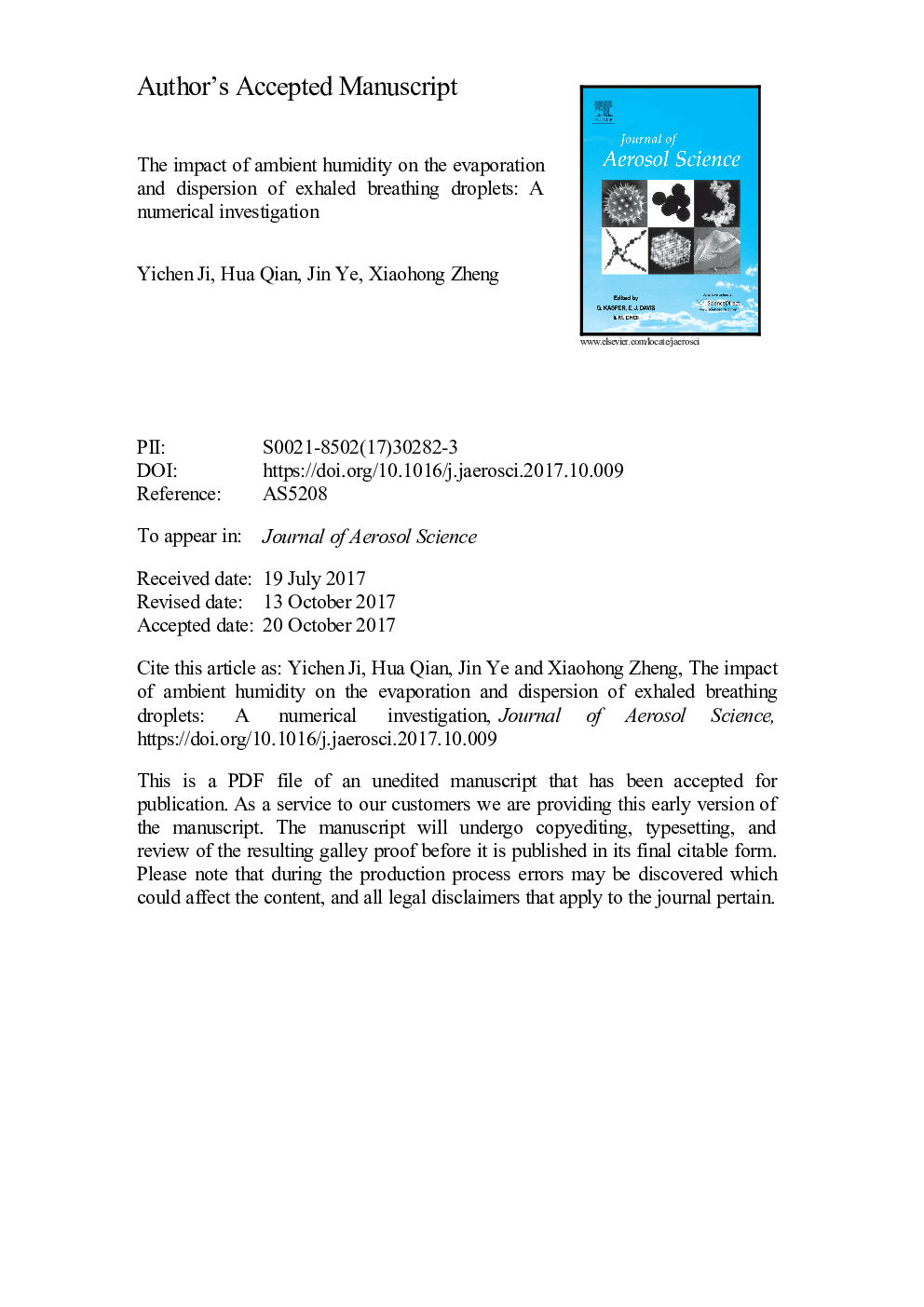| Article ID | Journal | Published Year | Pages | File Type |
|---|---|---|---|---|
| 8865337 | Journal of Aerosol Science | 2018 | 15 Pages |
Abstract
The impact of ambient relative humidity (RH) and airflow patterns on the evaporation and dispersion of infectious droplets exhaled from an infector was studied by the computational fluid dynamics (CFD) method. The DPM (discrete phase model) was employed to calculate the two phase flow, i.e. droplets and air. The model is validated by experimental and simulation results in literature. Pure water droplets with different diameters (every 10 µm between 10 µm and 100 µm) are exhaled from an infector in different ventilation systems, i.e. mixing and displacement with different RHs (0, 30%, 60% and 90%). The diameter variation, spatial distribution and spreading distance of droplets are simulated and compared. Results showed that evaporation of droplets under mixing ventilation is quicker than it under displacement ventilation due to accelerated heat and mass transfer between droplets and air by turbulence. However, the dried out time for small droplets (e.g. 10 µm) are extremely short, whatever the ventilation system is. Slow air velocity in displacement system or high RH environment may lower the evaporation speed of middle size droplets (e.g. 50 µm) and accelerate the dropping of large size droplets (e.g. 200 µm). For 100 µm droplets, they evaporate fast with low RHs while deposit fast with high RHs. Most droplets concentrate within ± 0.5 m of the person's mouth before they become droplet nuclei or fall onto the ground. This model may offer some suggestions in identifying favorable humidity-control ways to prevent the short-range infection transmission.
Related Topics
Physical Sciences and Engineering
Earth and Planetary Sciences
Atmospheric Science
Authors
Yichen Ji, Hua Qian, Jin Ye, Xiaohong Zheng,
